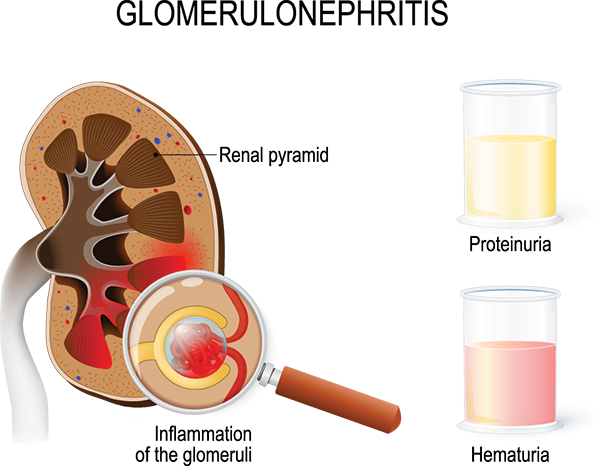A nurse is caring for a child who has acute glomerulonephritis.
Which of the following actions is the nurse's priority?
Check the child's daily weight.
Educate the parents about potential complications.
Place the child on a no-salt-added diet.
Maintain a saline lock.
The Correct Answer is A
Nursing care planning goals for a child with acute glomerulonephritis are directed toward the excretion of excess fluid through urination.
Monitoring fluid status is very important and daily weights are an effective way to monitor fluid retention, as weight gain is the earliest sign of fluid retention.
Choice B, Educating the parents about potential complications, is important but not the nurse’s priority.
Choice C, Place the child on a no-salt-added diet, which may be part of the treatment
plan but is not the nurse’s priority.
Choice D, Maintaining a saline lock, may be necessary for administering medications but is not the nurse’s priority.

Nursing Test Bank
Naxlex Comprehensive Predictor Exams
Related Questions
Correct Answer is B
Explanation
Nephrotic syndrome is a kidney disorder that causes your body to pass too much protein in your urine.
Swelling around the eyes is the most common sign of nephrotic syndrome in children 2.
Choice A is incorrect because smokey brown urine is not a symptom of nephrotic syndrome.
Choice C is incorrect because hypertension (high blood pressure) is a complication of nephrotic syndrome, not a symptom.
Choice D is incorrect because polyuria (frequent urination) is not a symptom of nephrotic syndrome.
Correct Answer is D
Explanation
Having a psychiatric disorder, such as depression, anxiety disorder, or bipolar disorder, is a significant risk factor for suicide in adolescents.
Choice A is not correct because while family conflict can be a contributing factor to suicide risk, it is not the greatest risk factor.
Choice B is not correct because homosexuality itself is not a risk factor for suicide; however, discrimination and bullying related to one’s sexual orientation can increase suicide risk.
Choice C is not correct because while the availability of firearms can increase the likelihood of a completed suicide attempt, it is not the greatest risk factor for suicide.
Whether you are a student looking to ace your exams or a practicing nurse seeking to enhance your expertise , our nursing education contents will empower you with the confidence and competence to make a difference in the lives of patients and become a respected leader in the healthcare field.
Visit Naxlex, invest in your future and unlock endless possibilities with our unparalleled nursing education contents today
Report Wrong Answer on the Current Question
Do you disagree with the answer? If yes, what is your expected answer? Explain.
Kindly be descriptive with the issue you are facing.
